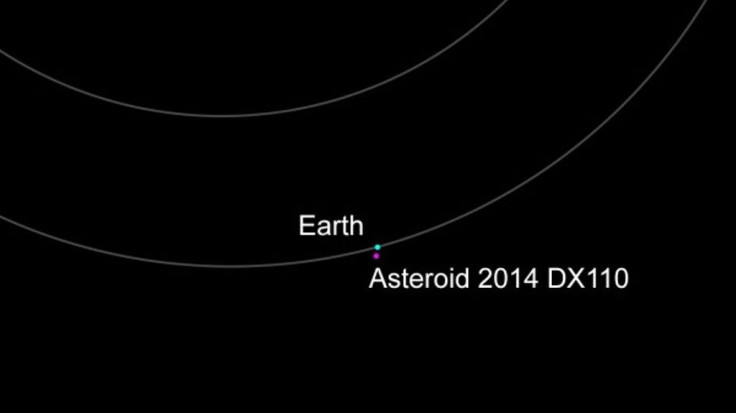Asteroid Comes And Goes: 2014 DX110 Approached Earth At A Distance Closer Than The Moon [VIDEO]

On Wednesday afternoon, an asteroid peeked at Earth from a close distance and went zipping between our planet and the moon.
The asteroid, named “2014 DX110,” passed the planet safely at about 4 p.m. EST, from a distance closer than that from the Earth to the moon. The extraterrestrial rock is estimated to be about 100 feet across and its closest approach to Earth was at about 217,000 miles from the planet. The average distance between Earth and its moon is about 239,000 miles.
According to astronomers, asteroids pass Earth about 20 times a year, and Wednesday’s asteroid -- discovered on Feb. 28 -- posed no threat to the planet.
The Virtual Telescope Project, which has captured the first video of the asteroid 2014 DX110, says that 102 images were taken back to back, each exposed for 3 seconds. The images were taken using the Planewave 17 robotic unit part of the Virtual Telescope, which tracked the movement of the space rock as it made its way between Earth and the moon. Check out the video here:
According to a report from Daily Mail, 2014 DX110 is an Apollo-class asteroid, which means that it has an Earth-crossing orbit. There are currently 240 known Apollo-class asteroids, but astronomers believe that there are at least 2,000 such objects with a diameter of 0.62 miles or more.
If one Apollo-class asteroid collides with Earth, it would punch a crater about 10-20 times its size, Daily Mail reported.
NASA said that it detects, tracks and characterizes asteroids and comets using both ground- and space-based telescopes. The Near-Earth Object Observations Program, commonly called “Spaceguard,” discovers these objects and characterizes a subset of them to determine whether their approaches could be potentially hazardous to our planet.
© Copyright IBTimes 2025. All rights reserved.




















